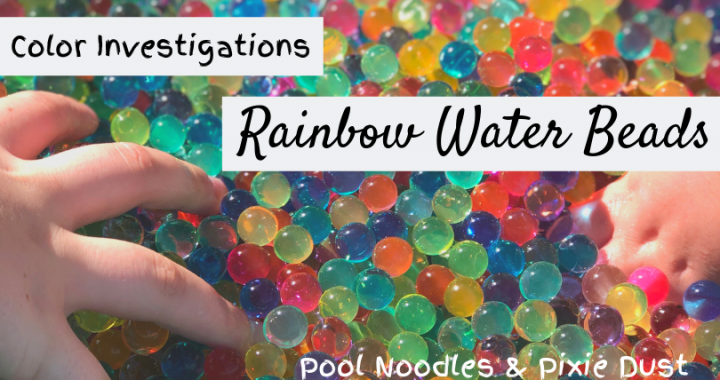We may earn money or products from the companies mentioned in this post.
So, I know it’s not quite Spring yet. But, we’re not letting that stop us from some Spring science with sensory color investigations.
Exploring how light bends and mixes with rainbow water beads is a fascinating science activity perfect for this time of year.
And, most importantly, it’s so much fun;)
Rainbow Water Beads
I found our beads at Wal-Mart and the jar seemed pricey at around $9. But, as you can see below they make a ton! I am also interested to see how long they will last and will update this post in the future when I find out. I couldn’t find the exact brand I used to link to. But, these Rainbow Water beads look very similar.
The directions say to use 3 cups of water and a teaspoon of beads. In the beginning, my daughter spooned beads into our dish. But, knowing I would want a lot of beads we eventually just poured. We didn’t measure, but I’d say we used about half of the 8oz. jar.
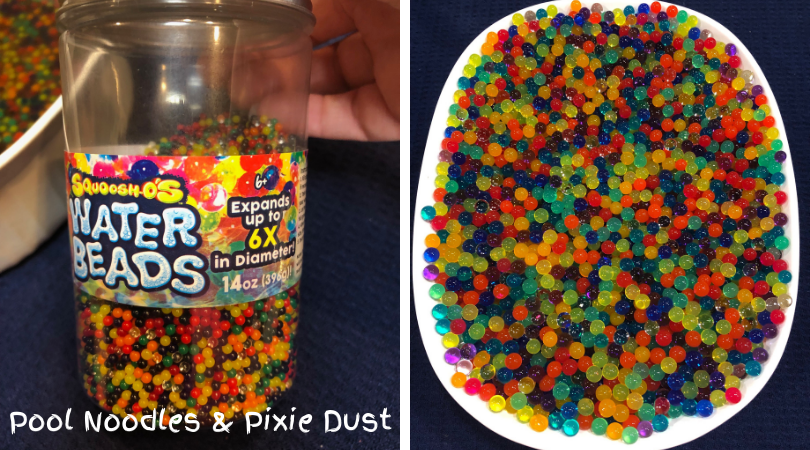
I added water until the beads were submerged. And, it took a while for them to hydrate completely. We did it the day and night before we were going to use them. So, I didn’t pay too much attention to the total amount of time it was taking.
Whenever the beads soaked up the water in the bins we added more. For reference, the jar said it could take anywhere from 2 hours to 24 to fully fill the beads.
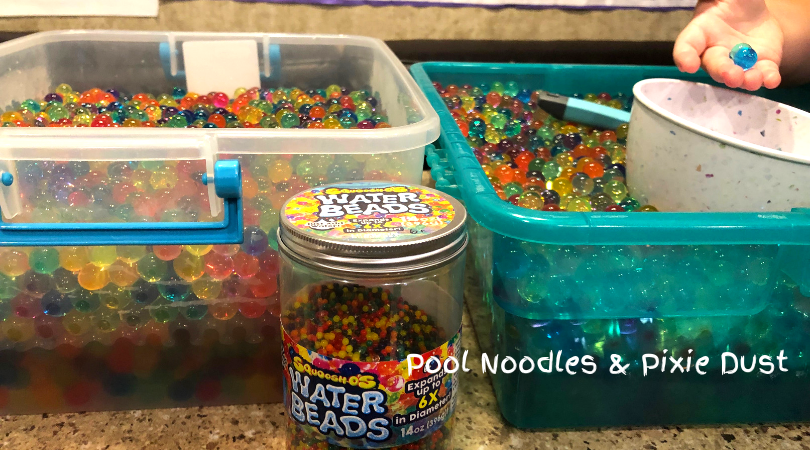
I did have to keep transferring my beads because I didn’t measure though. They just kept growing out of the dishes I was using! Which of course was fascinating to my kiddos:)
But, just in case you haven’t used water beads yet above is a picture of what I ended up with. They really do grow a tremendous amount as you can see from the number of beads missing from the jar and the amount in my bins.
Basically, if you’re trying to make a lot make sure you have some big bins handy.
Sensory Color Investigations
To make our sensory bin I put all of the beads into our largest plastic tub, giving the kids room to play. And then, I added things like bowls, tongs, funnels, and an ice cream scoop.
The beads were like mini-bouncy balls and the kids had fun just bouncing them on the bowls. And, yes they will go everywhere if you let them do this. But, we were outside so I didn’t mind.
They also work really well to pop through small funnels. And, the kids made many water bead “explosions” by pressing the funnels down into the beads.

We spent quite a while just playing and enjoying the sensory aspect. I’m pretty sure my daughter would have climbed in if I’d let her;)
The kids discovered something really cool about our ice cream scoop while playing. They realized that the metal reflected the sunlight and amplified the brightness of the beads resting in the scoop. They tried one color at a time and then mixed colors to see what it would look like.
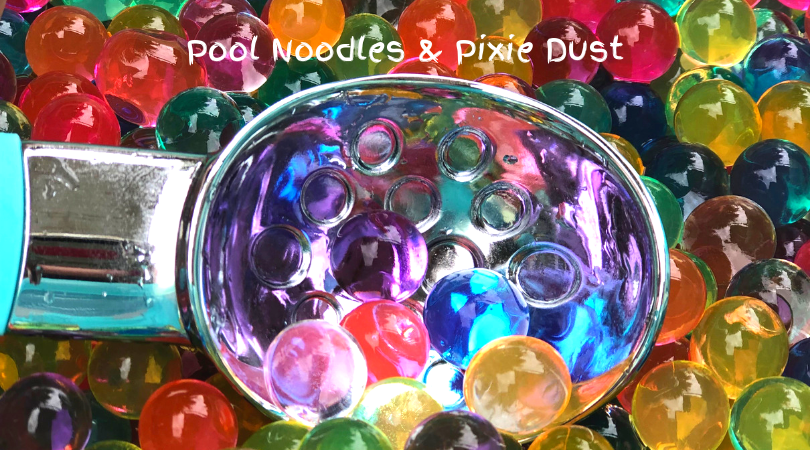
As a side note, my daughter, who’s 7, did try to lick the beads and asked if she could put them in her mouth. So, exploring these beads with all their senses can be tempting to kiddos. Our jar says these beads are for ages 6+ because of their potential to be a choking hazard.
As a result, I would definitely wait on water beads if you think your child will try to put them in their mouth and not be able to resist when asked. And, I also wouldn’t let young kids play without supervision.
Separating Colors
We started our sensory color investigations by separating the beads to look at the individual colors.
We put them into bowls and then into plastic sandwich baggies for easier manipulation.
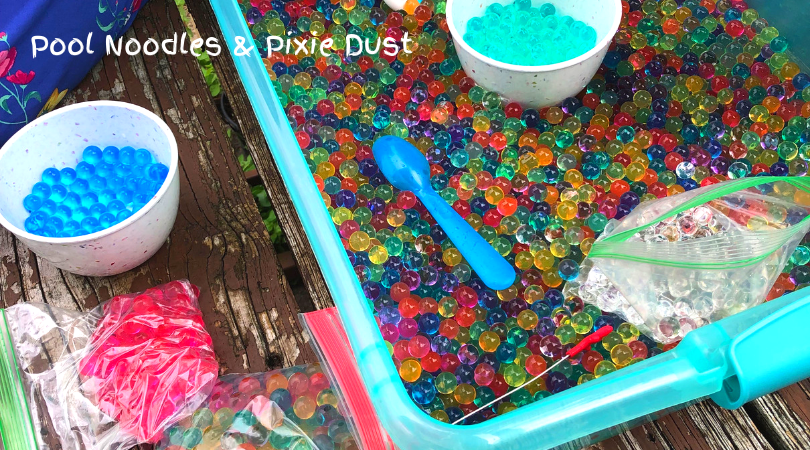
Moving the beads around the bags they realized that they were darker or lighter depending on the concentration of beads. They held them up to the sunlight to see the colored beads filtered with more sunlight. And, they also put the bags directly on their eyes to see what the world looks like through the different colors:)
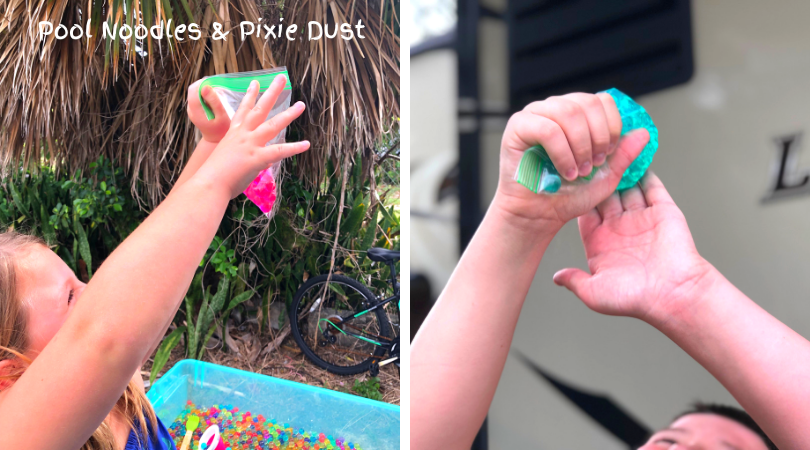
Color Mixing
While separating out the colors the kids wanted to see if they could mix just two colors to get another. I talked with my daughter about the primary colors of red, blue, and yellow and how they could be mixed to make secondary colors like purple, green, and ornage. We didn’t have any red beads, but we did have pink ones. So, we talked about how pink was just a form of red.
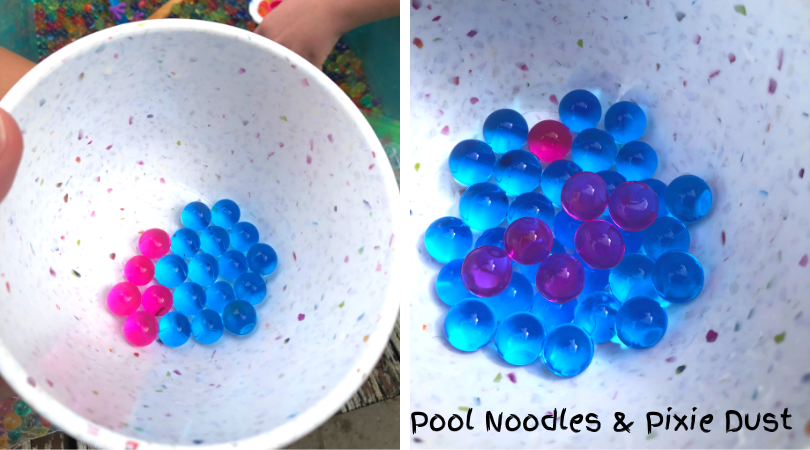
Knowing that red and blue make purple my daughter wanted to know if the pink beads and blue beads might make purple. And, she was excited when they did!
They also used blue and yellow beads to make green.
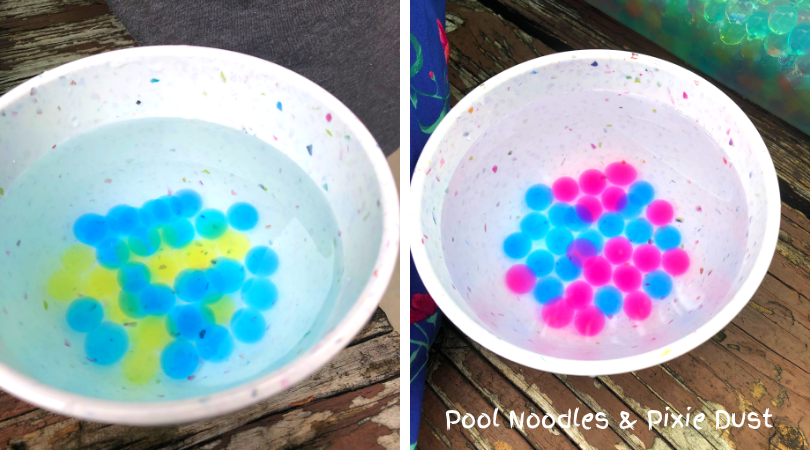
Some cool things started happening when we added excess water to their bowls. Adding water to the beads creates a cool hazy effect as the beads get more transparent.
Exploring how transparent they become was fun and we tried different combinations of colors to see what it would look like.
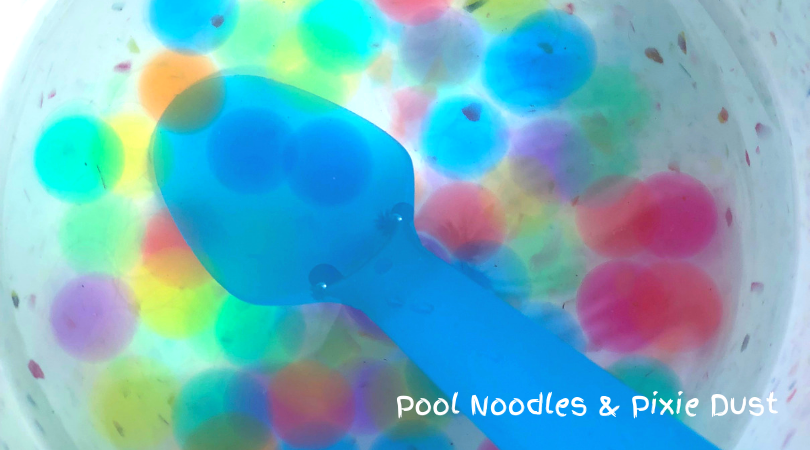
Rainbows
Next, we wanted to see if we could make rainbows with the beads. We put them in a mason jar and also in plastic bags. We weren’t able to get any rainbow reflections without adding extra water to the beads.
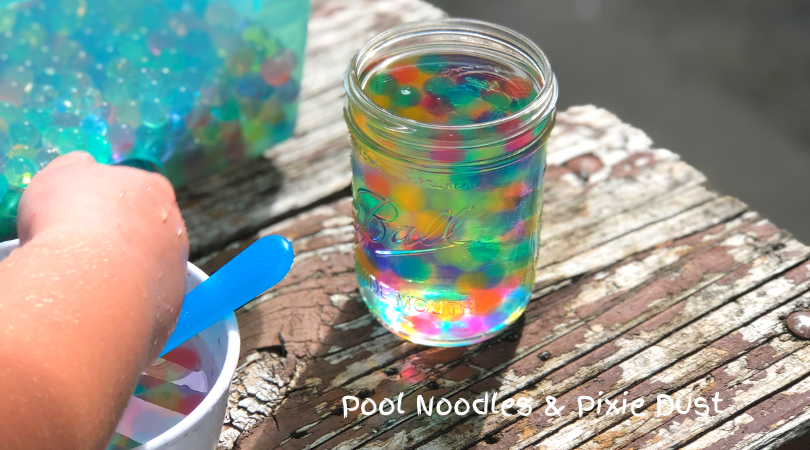
They held the jar up to the light and tried to make rainbows appear on their hands and arms.
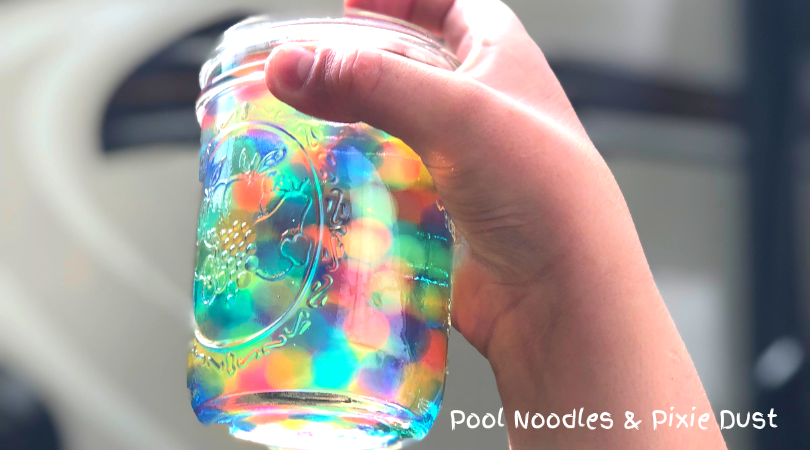
Our best results were with putting beads and water in plastic bags and setting them on white paper. We were able to make rainbows and could even see the circular outlines of the beads in the reflections.
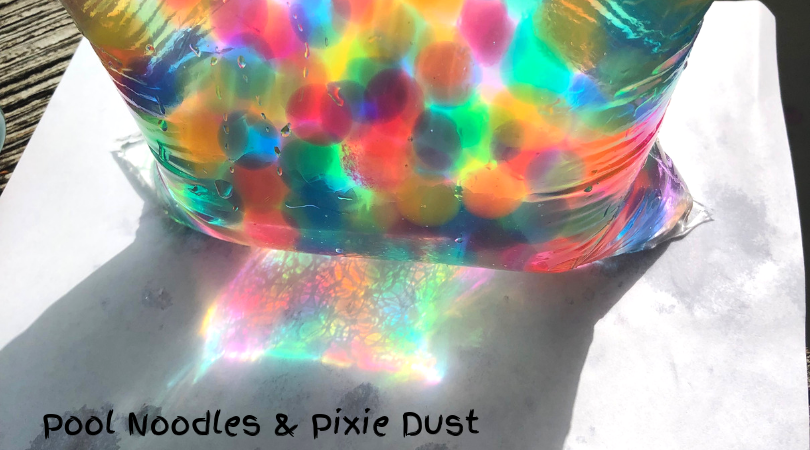
We had so much fun with our sensory color investigations. They were a really fun way to add science to our sensory play.
Heidi
